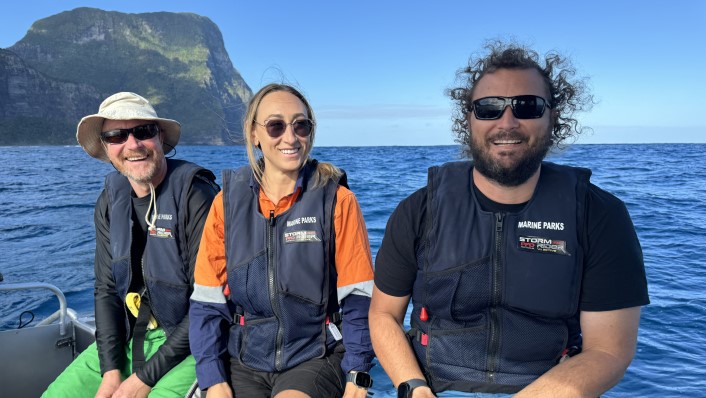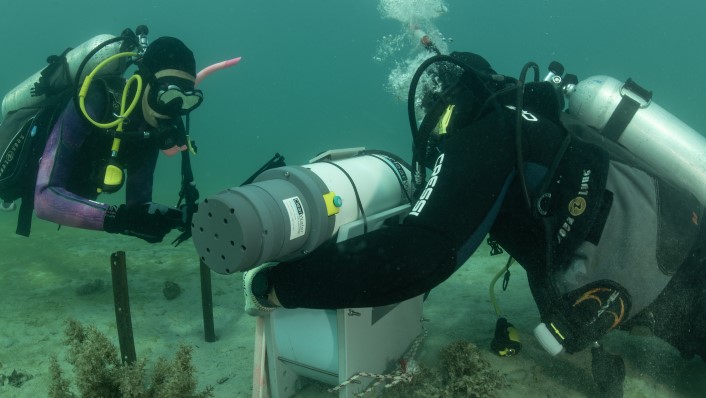Lying 600km east of the New South Wales coastline, Lord Howe Island is a World Heritage-listed destination renowned for its endemic plant and animal species.
It is also home to the world's most southern coral reef, a biodiverse ecosystem isolated from some of the stressors other coral reef systems face, and an important draw for the island's tourism industry.
Under a warming climate, continued careful management of reefs and other marine environments is essential to ensuring their future. Consequently, Lord Howe Island Marine Park managers have been working with researchers from the Australian Institute of Marine Science (AIMS), Southern Cross University, and the University of New South Wales to investigate water quality around the marine park.
Dr Kay Davis, a marine biogeochemist from AIMS, was part of the team that undertook a 10-day research trip investigating nutrient levels in the marine park, to understand where they come from and the processes that take them there.
"Nutrients, including nitrogen and phosphorus, are a key ingredient in coral reef systems but too many or too few can cause a shift in the abundance and species of corals and algae on a reef, which can have flow-on effects for the animals that live there," she said.

"Nutrients facilitate the growth, development and reproduction of key species. In marine environments, these nutrients may come from deep oceanic waters that periodically rise to the sea surface, or they may be transferred to the reef from nearby land masses, like Lord Howe Island.
"They can also come from the guano - or poo - of seabirds, which filter back to the reef via groundwater and freshwater flows.
"The same processes can be used to transfer nutrients from human waste and agriculture from the island into the nearby reef, artificially inflating levels of some nutrients.
"Measuring nutrient levels, understanding the sources of nutrients and the processes that facilitate their transport is important for managing the marine environment."
Dr Davis, along with AIMS colleagues Dr Shaun Wilson and Dr Ashly McMahon, joined with their collaborators to do just this.
Sampling
The team took nearly 1000 water samples from bores, beach seeps, the lagoon, and offshore locations around the island. They also deployed sensors to record levels of nitrates, phosphates, salinity, temperature, and currents as they change over time.
Samples of sea lettuce - a seaweed that grows in the intertidal zone, and paddle weed - a seagrass found in shallow subtidal sandy areas, were also collected to understand where nutrients come from, and how sources differ around the island.
The teams conducted reef surveys at sites where tissue and water samples were taken to bolster existing monitoring programs and determine how changes in nutrient concentrations and sources may be influencing the marine communities. These surveys will also help with investigations into stress events like the recent 2024 mass bleaching event which affected Lord Howe Island's coral reefs.

Samples are to be analysed in collaborating labs in the coming months, the results providing a benchmark of nutrient levels and sources that can be used to assess the effect of changing seabird populations, levels of agriculture, and human waste on the marine ecosystem in the future.
"Our findings will help managers understand nutrient flows into the marine park, facilitating informed management of nutrient sources," added Dr Davis.
"Working on Lord Howe Island has been a dream, with the opportunity to research unique marine ecosystems in such a stunning location. However, the threats from climate change on the corals there are becoming increasingly evident, especially with recent bleaching events.
"Assessing nutrient sources and sinks is crucial for combating negative human impacts on the reef, providing local management with the tools to give the Island's corals the best chance at remaining healthy."






